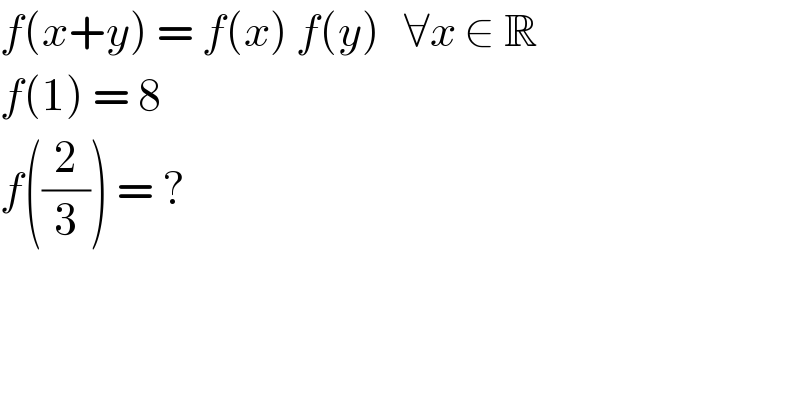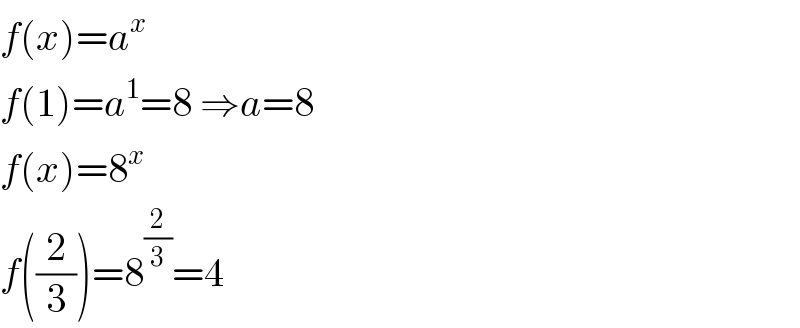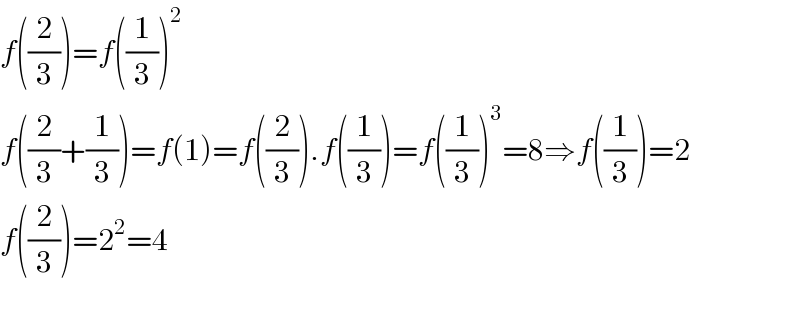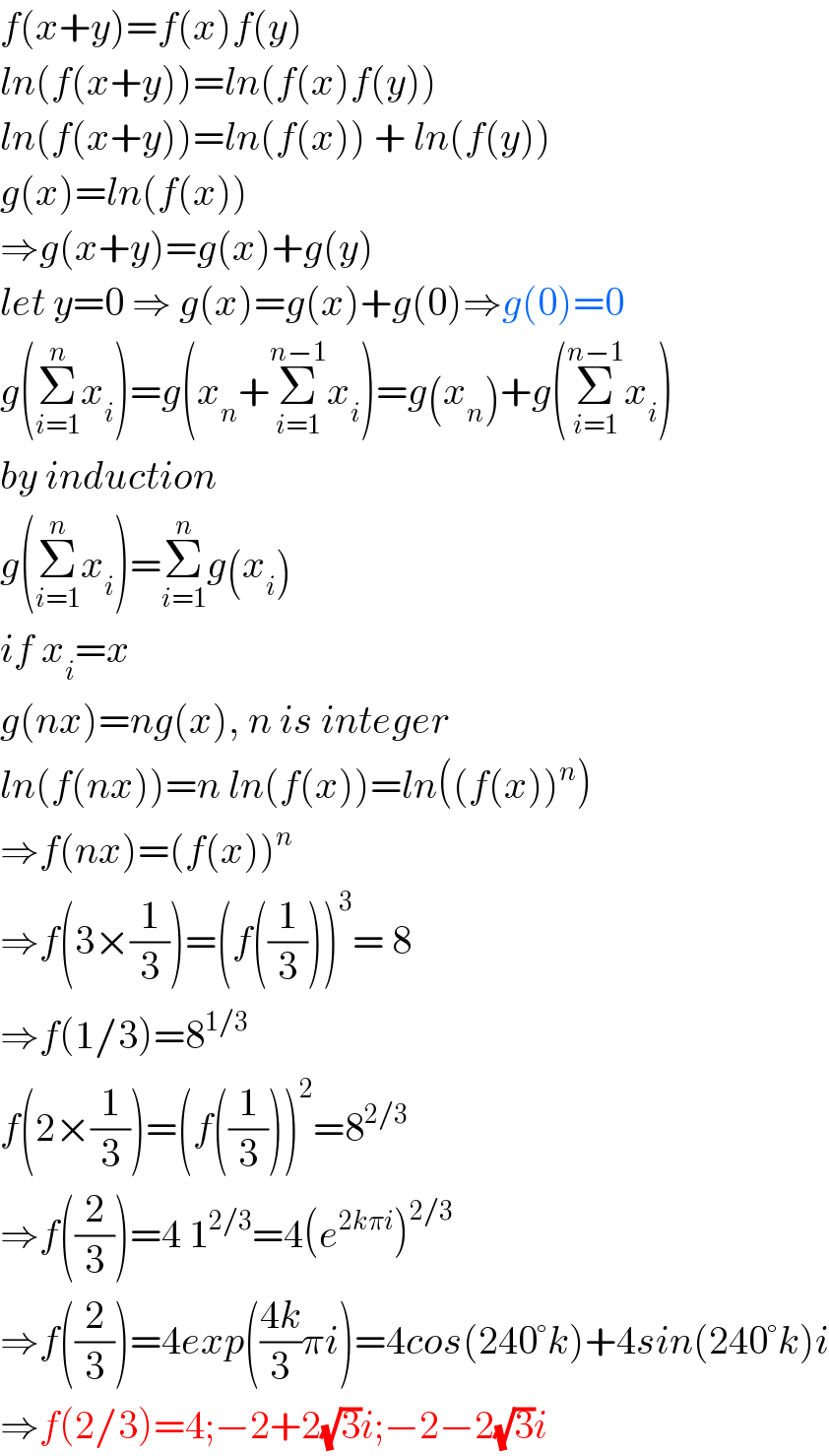
Question and Answers Forum
Question Number 118118 by naka3546 last updated on 15/Oct/20

Answered by mr W last updated on 15/Oct/20

Commented by bemath last updated on 15/Oct/20

Commented by MJS_new last updated on 15/Oct/20

Commented by bemath last updated on 15/Oct/20

Answered by mindispower last updated on 15/Oct/20

Answered by aleks041103 last updated on 15/Oct/20

